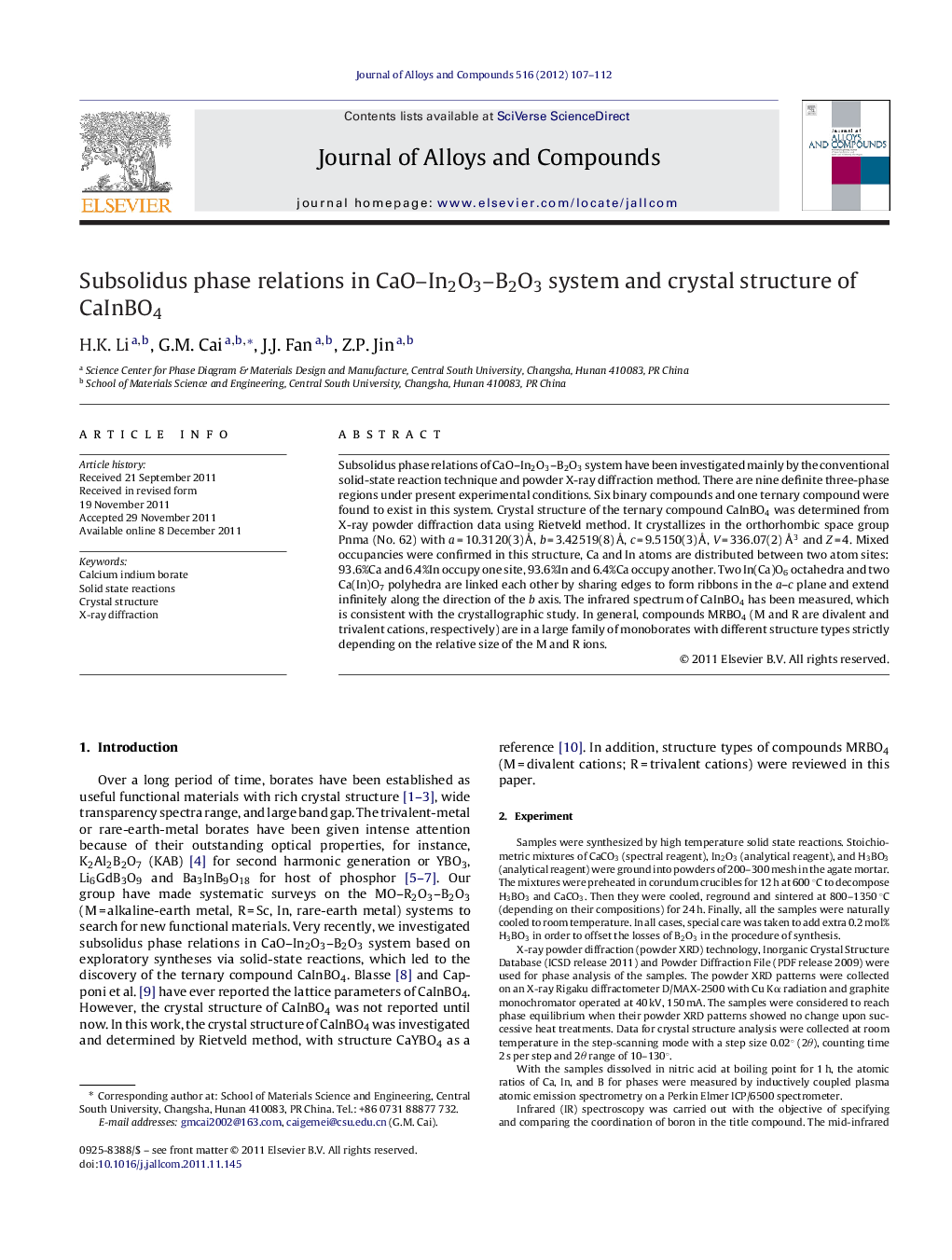| Article ID | Journal | Published Year | Pages | File Type |
|---|---|---|---|---|
| 1616577 | Journal of Alloys and Compounds | 2012 | 6 Pages |
Subsolidus phase relations of CaO–In2O3–B2O3 system have been investigated mainly by the conventional solid-state reaction technique and powder X-ray diffraction method. There are nine definite three-phase regions under present experimental conditions. Six binary compounds and one ternary compound were found to exist in this system. Crystal structure of the ternary compound CaInBO4 was determined from X-ray powder diffraction data using Rietveld method. It crystallizes in the orthorhombic space group Pnma (No. 62) with a = 10.3120(3) Å, b = 3.42519(8) Å, c = 9.5150(3) Å, V = 336.07(2) Å3 and Z = 4. Mixed occupancies were confirmed in this structure, Ca and In atoms are distributed between two atom sites: 93.6%Ca and 6.4%In occupy one site, 93.6%In and 6.4%Ca occupy another. Two In(Ca)O6 octahedra and two Ca(In)O7 polyhedra are linked each other by sharing edges to form ribbons in the a–c plane and extend infinitely along the direction of the b axis. The infrared spectrum of CaInBO4 has been measured, which is consistent with the crystallographic study. In general, compounds MRBO4 (M and R are divalent and trivalent cations, respectively) are in a large family of monoborates with different structure types strictly depending on the relative size of the M and R ions.
► We have investigated subsolidus phase equilibrium of CaO–In2O3–B2O3 system. ► Crystal structure of CaInBO4 was determined using powder XRD method. ► [BO3]3− group was confirmed by infrared absorption spectrum of CaInBO4. ► Structure of compounds MRBO4 (M = divalent cations; R = trivalent cations) was reviewed.
